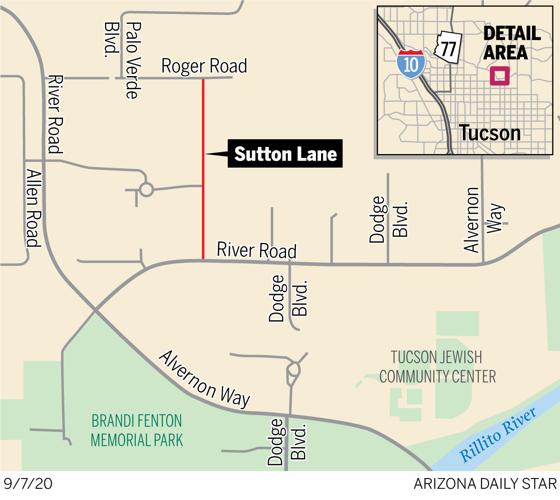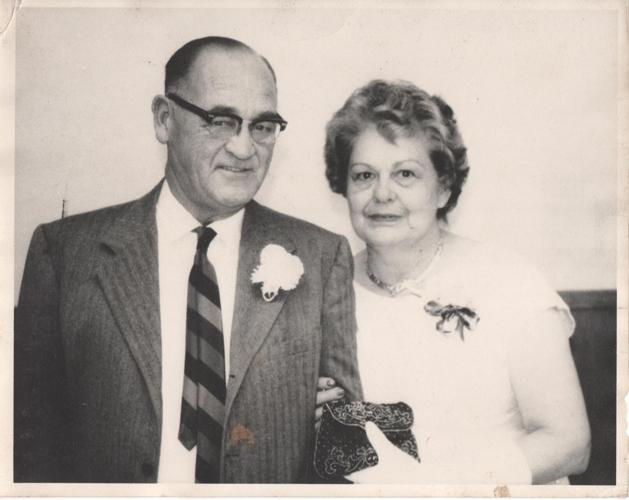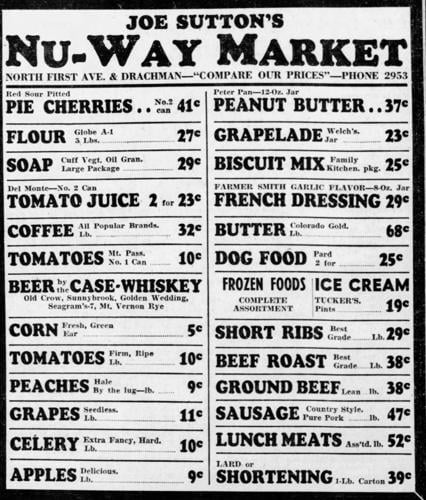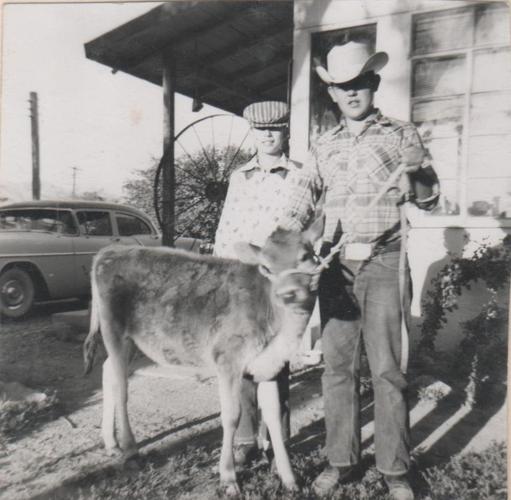Joe D. Sutton was a Tucson entrepreneur with a long list of jobs and Arizona enterprises over several decades starting in the 1930s.
He was born in 1907 to Ray E., a farmer, and Maidie Sutton in Sutton Township (now part of Boynton), Oklahoma, an area named by his grandfather. He had five siblings.
By 1930, the Sutton family had relocated from Oklahoma to Tucson. Joe Sutton obtained work as a bookkeeper in an unknown company and a couple years later is believed to have been working in the local freighting business.
On Dec. 7, 1935, Joe Sutton and Dorothy Walraven were married. A family story is that after the two were wed they rode a donkey through the northbound sidewalk of the then-unfinished Stone Avenue Underpass, while the cement was still wet, leaving donkey footprints in the sidewalk for years to come.
Since Sutton is believed to have been working at a service station at 220 N. Stone Ave., a short distance from the unfinished underpass at the time, they might have started from this point.
Dorthy was born to Benjamin H. and Stella (Mitchell) Walraven in 1909 in Nashville, Tennessee. The family moved several times over the next 20 years, as her father worked in bookbinding and book sales, before landing in Tucson in the early 1930s.
After his marriage, Sutton again was working as a bookkeeper, this time for W.H. Cox & Sons Produce Co. on Toole Avenue, with he and his bride having moved into a home on South Liberty Avenue. Sutton would remain with the company until 1942, by which point he had been promoted to office manager. He also bowled for the company team, making it into the local newspaper a few times for his pin plummeting prowess.
In between this time, the pair would have two sons: Joe R. Sutton, born in 1939, and John M. Sutton in 1942. As John recalls, “My brother, Joe Russell Sutton, and I were both born at the Stork’s Nest maternity ward at 221 N. Court Ave., in the same bed, same doctor, four years apart.”
Soon after the birth of their second son, Sutton bought the town of Elgin. The “town,” located in Santa Cruz County, consisted of a house on the hill; the general store, which included hay and feed sales; and the post office, which made him the town post master. Due to holding this essential position, he was excluded from the military draft.
On a number of occasions he had the unenviable task of delivering death notices to families of military personnel.
By July 1944, the family had returned to the Old Pueblo, residing at 1230 E. North St. (now Grant Road), and that month Sutton bought the NuWay Market, a wooden structure that faced Drachman Street near the corner of First Avenue. He ran this firm for about three years before selling it.
He then spent some time involved with Tucson Packers Inc., a wholesale and retail meat business, before it was sold in June 1948. He also took fishing trips to Rocky Point, Mexico.
Sutton was now looking for something to do, and as a sportsman, he had heard complaints from shooters that they couldn’t find a bullet that was uniform enough for their needs. He decided this would be his next business.
In July 1948, Sutton and partner Dave “Buck” Hyman, who owned Buck’s Sport Shop in town, had a small factory constructed on the northeast corner of North 10th Avenue and West Flores Street. Over the following year, while Sutton and Hyman perfected their projectile, they also designed and set up the machinery for the factory.
By August 1949, the Arizona Bullet Company had been open a few weeks and had the capability of making 15,000 bullets per day, although the enterprise didn’t produce any other part of the cartridge, instead relying on the shooter to handload or reload their own empty cartridges.
Two years later, the firm was flourishing and turning out between 30,000 and 50,000 custom-made bullets a day, and receiving high praise from the likes of Tucson residents and Alaska explorers/authors Harmon “Bud” and Constance Helmericks. A copper shortage that year is likely what put the ammunition firm out of business.
“After dad’s company went under,” John shared, “he decided he wanted to be a ‘gentleman farmer.’ So, in 1952, when I was in the fourth grade, he bought an ex-dairy farm from Lester and Marjorie Woods at 3571 E. River Road. That was the neatest place ever to me. I raised and cared for all sorts of livestock, pigs, chickens, cows, horses, etc. I plowed and disked fields with a tractor and drove it all over town (no license necessary). Those were my formative years and I knew what I wanted to be when I grew up, a farmer, although I ended up in law enforcement instead.”
John continued, “The short northbound dirt road, off of River Road to the farm, served three other properties as well as ours. And even though this easement had been given by a previous land owner to Pima County in 1937, so it could be made into a county road, at the point my family lived here it still wasn’t a county-maintained public road. Our family and our three neighbors believed the land the dirt road covered belonged to us, and probably as a result referred to it as Sutton Lane, although officially it had no name but apparently it stuck.”
In 1958, Sutton sold the family home and 16-acre farm to Mrs. Jessie D. Richmond, a breeder and trainer of horses, from Greenwich, Connecticut. She planned to use the property for a small scale Palomino horse breeding farm. The property would later be referred to by some as the Vision Quest ranch, and was part of a program to help delinquent youths. The Vision Quest wagon was parked out front for many years.
Sutton by this point had bought a new home on East Hawthorne Street and owned the Joe Sutton Oil Co., a wholesale auto gas and oil firm, located on West 29th Street.
Following this last enterprise in Tucson, according to his son John, “My parents moved once again with yet another business venture. In 1959, they moved to and opened a roadside business with a café, motel, and gas station midway between Superior and Miami, Arizona, on Highway 60. They called it Sutton’s Summit although many referred to it as Top of the World. Before the Top of the World burned down a couple of miles away and years before, it was a notorious whore house. Before they sold and moved to Grand Saline, Texas, the property was subdivided and sold in parcels as was the property across the highway. And, guess what? In the subdivision across the highway there is a Sutton Road and a Sutton Place.”
Joe D. Sutton died in Texas in 1979 and Dorothy Walraven Sutton in Texas in 1987.
Note: Even though Sutton Lane, off of River Road, appears as early as 1970 in the Arizona Daily Star, Sutton Lane wasn’t officially established by Pima County until 1992.







